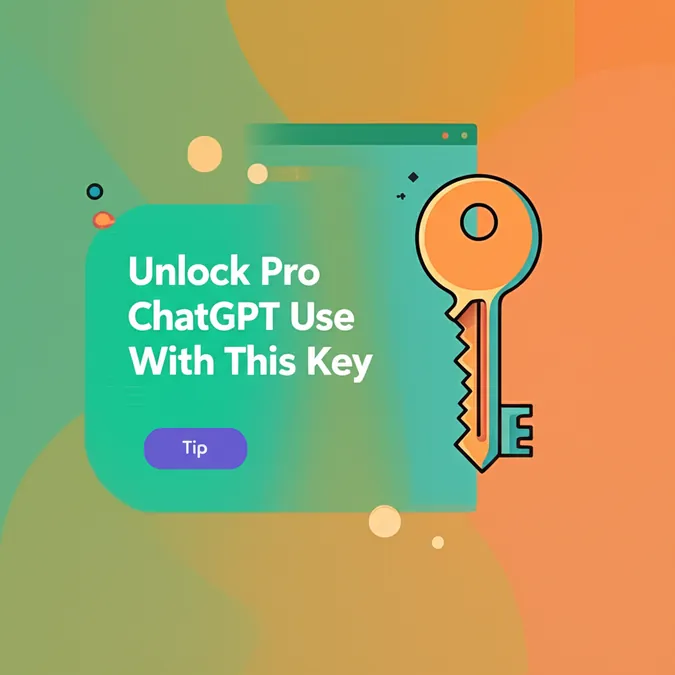ChatGPT Voice A More Human AI Interaction Experience
Once you try voice mode with ChatGPT, typing out your questions might suddenly feel slow and outdated. Many of us have dealt with voice assistants that constantly misheard or interrupted mid-sentence. So, approaching ChatGPT's Voice Mode, activated by a little wavelength icon, might come with low expectations. You might think it's just another cool-sounding feature that falls flat in real-world use. However, this one is genuinely surprising. Voice Mode doesn't just provide answers; it engages in what feels like a real conversation.
It adeptly picks up on pauses, mumbled thoughts, and even those common filler words like "uhhh" without breaking the conversational flow. Whether you are driving, cooking, or simply multitasking, you can speak naturally and receive helpful answers without needing to pick up your phone. This isn't just about being faster than typing; it feels easier, more intuitive, and significantly more efficient. If you have not tried it yet, here is why ChatGPT's Voice Mode could become your new favorite way to interact with AI.
For more background, you can learn about What Is ChatGPT and Everything You Need to Know About the AI Chatbot.
The AI Voice Race ChatGPT and Its Competitors
ChatGPT, from OpenAI, isn't the only AI chatbot venturing into hands-free interaction. Google's Gemini Live offers a similar vibe, allowing you to talk over it while it keeps up. Anthropic's Claude has a beta version of its voice mode on mobile apps, complete with on-screen bullet points as it speaks. Additionally, Perplexity's iOS and Android assistant answers spoken questions and can launch apps like OpenTable or Uber on command.
Even with fierce competition in mastering real-time AI conversation, ChatGPT often remains a top choice. Regardless of your preferred chatbot, consider taking a break from typing and trying out its voice option. You might find it far more useful than you initially think.
Demystifying ChatGPTs Voice Mode
Voice chat, or "voice conversations," is ChatGPT's hands-free mode that allows you to talk to the AI model and hear it respond, all without typing. You will find a voice icon in the mobile, desktop, and web app, typically on the bottom-right of any conversation. Pressing this button lets you say your question aloud. ChatGPT will then transcribe it, process the query, and reply. As soon as it finishes speaking, it starts listening again, creating a natural back-and-forth dialogue.
Just remember: Voice mode runs on the same large language model as regular ChatGPT, so it can still hallucinate or get facts wrong. You should always double-check anything important.
Standard vs Advanced Voice Understanding the Options
OpenAI offers two versions of these voice conversations: Standard Voice (the default, lightweight option available for free) and Advanced Voice (exclusively for paid users).
Standard Voice first converts your speech to text and then processes it with GPT-4o (and GPT-4o mini), which can take a little longer to respond. Advanced Voice, on the other hand, uses natively multimodal models. This means it "hears" you and generates audio directly, making the conversation more natural and occur in real time. It can pick up on cues beyond the words themselves, like your talking speed or the emotion in your voice, and adjust its responses accordingly.
Note: Free users can access a daily preview of Advanced Voice.

ChatGPT Voice Mode in action.
7 Compelling Reasons to Embrace ChatGPTs Voice Feature
Here are seven reasons why you should consider using ChatGPT's voice mode:
-
It is genuinely conversational Unlike typing, when talking to ChatGPT, there is no need to hunt for the perfect word or constantly backspace after typos. You can just speak naturally, complete with "umms," "likes," and other awkward breaks. Voice mode handles these half-finished thoughts and responds with either a fully developed answer or a clarifying question to help you focus your query. This effortless give-and-take feels much more natural than typing.
-
You can use ChatGPT hands-free While you still need to open the ChatGPT app and tap the voice mode button to start, once initiated, you no longer need your hands to continue the conversation. You could be stuck in traffic brainstorming a vacation, asking about flights, hotels, landmarks, and restaurants without touching your phone. The conversation is saved within the app, so you do not have to remember everything ChatGPT tells you.
-
It is good for learning a new language with real-time translation Voice mode excels at language practice. You can speak in English and have ChatGPT respond in flawless Polish, for example, complete with pronunciation tips. Just ask voice mode, "Can you help me practice my [language]?" and it will offer various ways to help, such as conversation starters, basic vocabulary, or numbers. It also remembers where you left off, allowing for structured learning, almost like taking lessons.
-
Get answers about things you see in the real world This feature is exclusive to Advanced Voice but is a standout capability. Thanks to its multimodal superpowers, you can turn on your phone's camera or use a video/photo to ask ChatGPT for help. For instance, if you find an unfamiliar painting at a thrift store, you can use voice chat with your camera to ask about its origin. In seconds, it might tell you the painting's title, the artist's name, and when it was created.
-
It is a better option for people with certain disabilities For anyone with low vision or dyslexia, talking is often preferable to typing. Voice mode can transcribe speech and then read the answer aloud at a chosen pace (adjustable in settings or by asking ChatGPT to slow down). The hands-free option also assists individuals with motor-skill challenges, requiring only a single tap to start and another to stop, without needing extensive keyboard typing.
-
Faster brainstorming Sometimes ideas come faster than you can type. ChatGPT's voice mode is perfect for spitballing story ideas, planning a new living room layout, or deciding on interesting meals for the week. Thinking aloud rather than staring at a phone screen allows ideas to flow more easily and quickly, especially with ChatGPT's instant follow-ups helping to maintain momentum until an idea is polished.
-
Instant summaries you can listen to You can drop a long PDF, like a movie script or textbook, into the chat, ask for a summarization, and have the AI read it aloud while you do other tasks, like folding laundry. It is like turning any document (even Wikipedia pages) into an on-demand podcast.
Beyond the Keyboard The Future is Vocal
Voice mode is not just a neat trick; it is a quick and more natural way to use ChatGPT. Whether you are translating street signs, brainstorming an idea, or catching up on news aloud, talking to ChatGPT feels less like using a chatbot and more like having a conversation with a knowledgeable expert. Once you get used to thinking out loud with AI, you might find yourself reaching for your keyboard less often.


